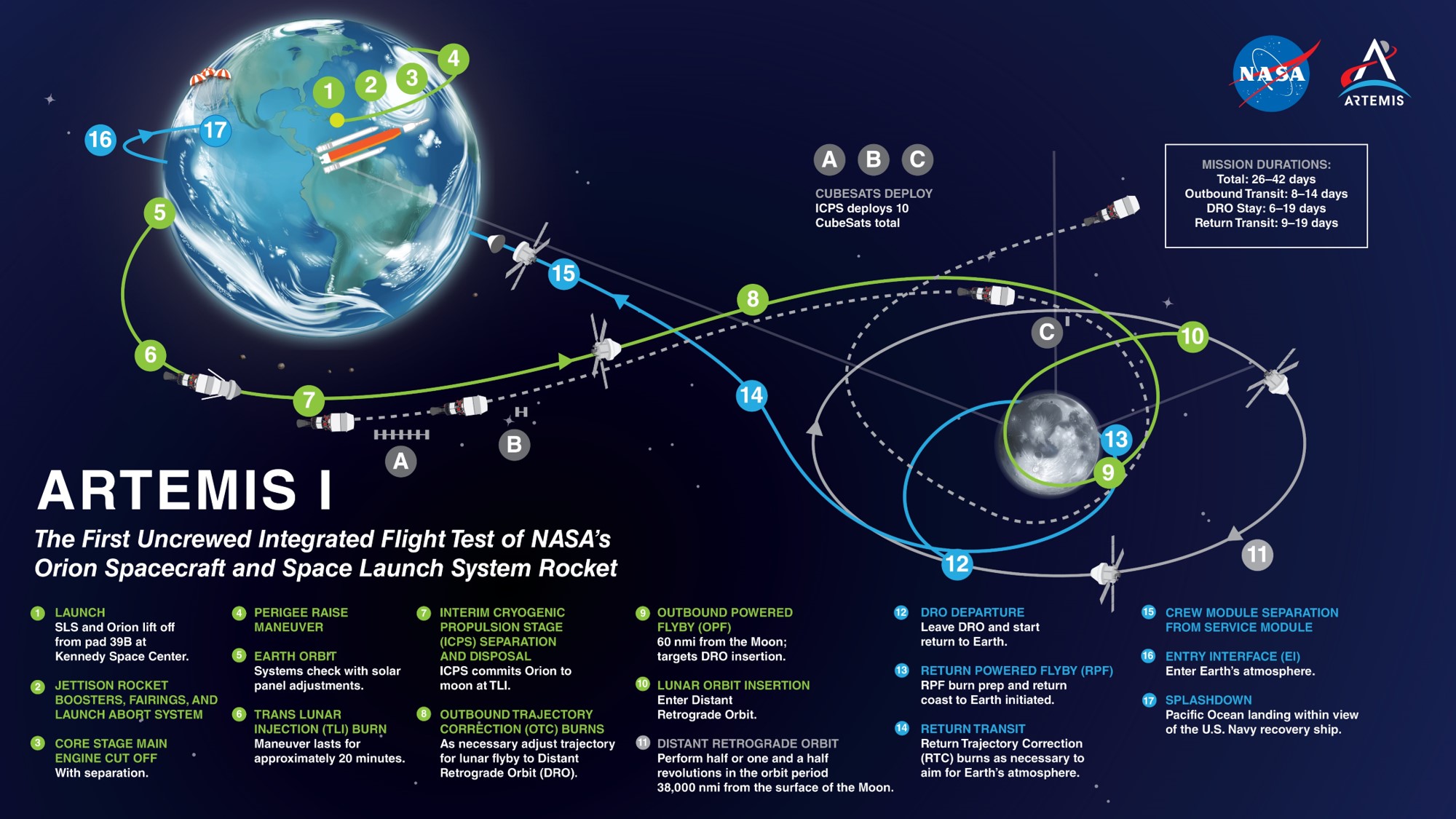It’s been a long time coming, but NASA’s next moon rocket is just months from liftoff on its first uncrewed test flight. The Space Launch System (SLS) is a super heavy-lift vehicle capable of delivering 95 tons to Low Earth Orbit, but its primary purpose will be to deliver humans to lunar orbit and, eventually, to the lunar surface. SLS has been in development since 2011, and it’s faced a series of delays, but launch day is finally within sight. Earlier this month, the rocket was fully stacked for the first time in the Vehicle Assembly Building at the Kennedy Space Center, and the Orion capsule (the spacecraft’s crew cabin) was attached to the top. The full stack stands an impressive 322 feet tall, just shy of the Saturn V’s 363 feet.
NASA Administrator Bill Nelson (a former astronaut himself) told reporters that “with stacking and integration of NASA’s Space Launch System rocket and Orion spacecraft complete, we’re getting closer and closer to embarking on a new era of human deep space exploration…Thanks to the team’s hard work designing, manufacturing, testing, and now completing assembly of NASA’s new rocket and spacecraft, we’re in the home stretch of preparations for the first launch on the Artemis I mission, paving the way to explore the Moon, Mars, and beyond for many years to come.”
With stacking complete, the next major task will be to roll the rocket out to the pad, where a full wet dress rehearsal will take place. The wet rehearsal involves loading propellant into the vehicle and performing a countdown, testing every aspect of the mission just shy of actually blasting off. The exact date for liftoff of Artemis 1 will be determined after the wet dress rehearsal ensures everything is in good working order.
Artemis 1 will spend over three weeks in space. While in orbit around the Moon, it will test out systems and perform experiments, including the Matroshka AstroRad Radiation Experiment (MARE), which will try out new technologies designed to protect human tissue from the dangerous radiation outside Earth’s protective magnetosphere.
The mission will also carry 10 Cubesat with varying science and engineering goals. Some of the more interesting include Lunar IceCube, which will look for ice on the Moon with an infrared spectrometer, and NEA Scout, which will deploy a solar sail and navigate to a small nearby asteroid. A Japanese Cubesat called OMOTENASHI will impact the moon with a solid rocket booster, while ArgoMoon will maneuver around the SLS upper stage, taking high resolution images.
The February launch will be the first test of a rocket designed to carry humans to the moon since the days of Apollo (unless you count the canceled Constellation program, which tested its Ares 1 rocket back in 2009).
If Artemis 1 is successful, the next flight of SLS will be the real deal, with astronauts on board. Artemis 2 will carry four people and has a tentative launch date of September 2023. Artemis 3 will follow, carry humans to the lunar surface itself. Artemis 3 currently has a 2024 launch date, but this is expected to slip. Future missions will construct a space station (the Lunar Gateway) in the vicinity of the Moon, and perform longer duration visits to the lunar South Pole, with the intended goal of building a more permanent presence on and around our nearest celestial neighbor. The Artemis Program will test various in-situ resource utilization techniques with the ultimate goal of learning how to operate in deep space for long durations, which will be necessary for an eventual human mission to Mars.
Featured Image: Graphic showing the mission plan for Artemis 1. NASA.


When NASA goes sane and cancels the SLS, what other boosters can launch the Orion?